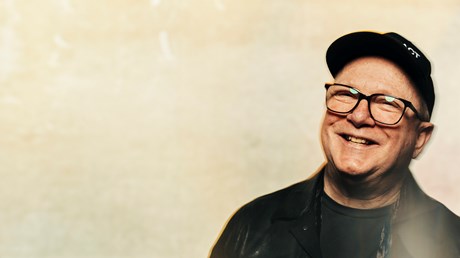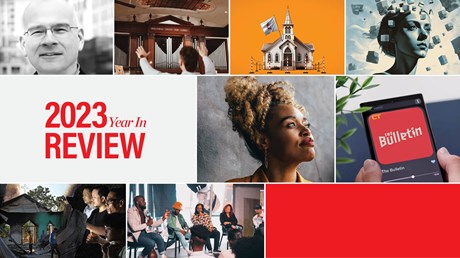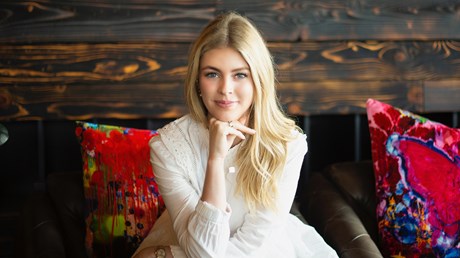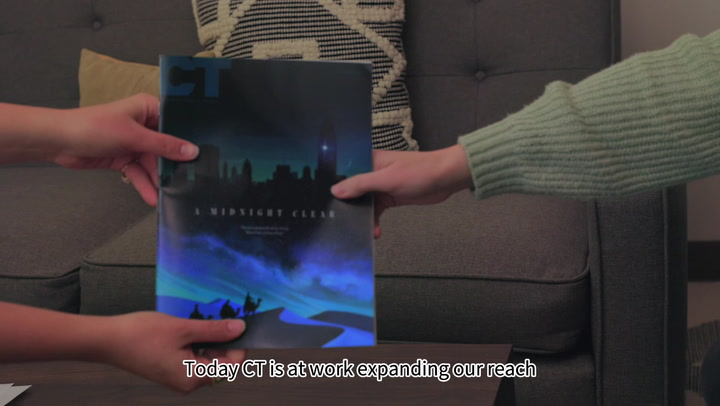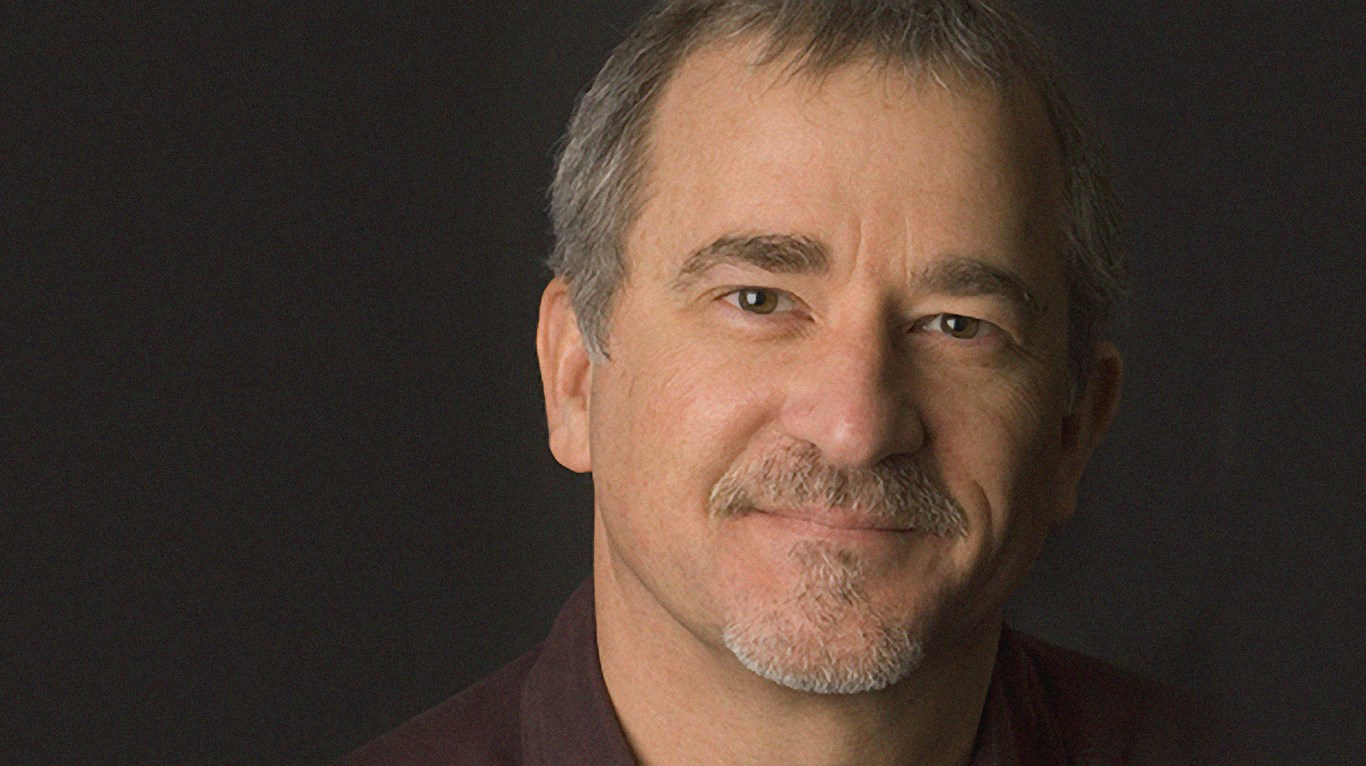
Will you help encourage and connect the church?
Give NowWill you help encourage and connect the church?
Give NowGary Gnidovic has been an art director at Christianity Today for 25 years. We sat down with him to talk about faith, art, mission, behind-the-scenes design, and that time he fell into a manhole in China.
How did you come to decide to combine your love for art with your faith?
I became a believer in 1972, during my senior year of high school. It was through the Jesus People who came through town. I took my time the next couple of years, trying to figure out what I was going to do with my life. I did three years of junior college because I wanted to focus on my faith for a while before deciding what I should do.
During that time, I took an assessment test that strongly suggested that I go into the arts. Southern Illinois had one of the top five photography programs in the nation—photography was still coming into its own as an art form. We focused a lot on thinking deeply about the photographic image, thinking beyond surface and formal concerns toward the meaning of photographs.
In my personal photography and when I go out on a Christianity Today assignment, I still think back on what the meaning of my photographs brings. I had great instructors.
I have my masters from the Art Institute of Chicago. After graduating and trying to decide what to do, I was doing freelance assignments for John Deere's corporate magazine. Over the process of working with them I thought to myself, I think I'd like to be an art director. And all the while, I'd been heavily influenced by Francis Schaeffer. He believed that everything we do, we do to God's glory. There's no distinction between the secular and the Christian. And he had great respect for the arts, and I didn't see that anywhere else.
I may have never gone into the arts had it not been for his works. I took a lot of time after high school to think through all of that stuff. I got the chance to see him speak when he was doing a conference in Champagne. I felt it was supernatural intervention. I had graduated and was praying, God, if you can use my work in any way, please do.
So I went to this conference with my wife and we sat in an aisle in this big auditorium, and this guy from the back row called down to Edith who was down near the stage and said, "Edith, I have a problem, I need to talk to you."
They had their conversation right next to me. The man said, "My camera's broken, I don't know how I'm going to get pictures for you."
I had my camera and I was right there, so I volunteered. After the conference, I sent them my photos, and then ended up using them in their newsletters. It was God's way to show me that this was the right field.

What's your process when you start to design?
First we must establish the emotional tone—we read the content, we may ask for some input from the editors, and then establish and hone in on a concept. Then you have three choices:
- All type
- Illustration
- Photography
Normally it's one of the latter two. If it's illustration, we try to find the illustrator that will closely match that emotional tone—the feel of the article. The message. We just try to find a good match. And we have never limited ourselves to only Christian artists. We draw from a large pool. And so that's the second thing. And then, if it's an illustration, we ask for two to three concept designs.
Normally with illustration, we like to start with a strong title or two so the illustrator can work with that. But the process is always a little bit fluid. The illustrator might come in with a concept that's great but doesn't work with titles, so then we focus on the illustration and ask them to finish it. Once it's done, we start re-working on titles. In this way, the title affects the interpretation of the art work and the art work reflects the meaning of the title. It's hard to know what defines a great image/title combination, but you know it when you see it, and it's worth it.
I especially enjoy working with photographers, because it's part of my background. We don't want to chain them down and make them think they can only do one thing, but we do communicate the feel. And then once we get the photographs you just have to work with them—you get what you get.
What's the most memorable trip you've taken as a Christianity Today photographer?
China. Rob Moll wrote the piece, and I had a lot of freedom to find my own stories that would support his piece. I ended up going to three cities. It was a great experience. We've all heard about how much is going on in China and how the church is expanding and in phenomenal growth. And although we hear about Christianity growing in rural areas, it's also growing for urban professionals.
When I think on my time in China, I think about my last day in Beijing. I was invited to go to a house church on the thirteenth floor of a high rise building in the middle of Beijing. I was the first westerner at this church, ever. I had to be very careful getting there. It was a very simple service—singing, message, and then prayer, if you'd like to be prayed for.
I had my eye on one young lady the whole time—a lady who seemed to be very affected by what was going on around her. I discretely photographed her during the service, and ended up photographing her as she went from unbelief to belief, over the course of the meeting. At the end of the service, she went up for prayer and became a believer. It was incredible to watch someone do that.
I'm very grateful for how CT has allowed me to go on these trips. It started off with Magazine Training Institute in Eastern Europe right after Communism fell. It was so exciting—people were so eager to learn everything you said. We heard all of these stories about how people used to have to be so careful about spreading the Gospel in any written form. There was the securitate, and this horrible feeling that you'd never know who was going to rat on you. Those were very, very interesting times. I remember flying into Kiev one night and getting out of the airport and being struck by how dark and silent the city was. Everybody whispered. It was just this thing, you could still sense the oppression leftover from Communism.
Do you want to hear some funny stories?
Of course.
One time I was in Romania, and I was teaching with MTU, and I decided to get up early and go wander about with my camera early in the morning. I found myself in the middle of a farmer's field in a low valley, photographing cows in the fog. And then all the sudden these three, tough looking guys came down from the valley—one of them had a hammer, one had a shovel, one had a rake. They were on their way to work in the fields, and they asked me for money.
I gave them money. I mean, they had all the tools to kill me and bury me.
I actually asked them to take their pictures, and they agreed. I did their portraits, but I was so nervous that I overexposed their pictures by about six stops.
Yikes.
One time in China I fell into a manhole.

It was at night, in a shopping area. I hadn't seen a westerner all day, and I was walking around looking for a Three Self church. I didn't see that the manhole was uncovered, so I went in. Thankfully, I stopped myself—my arms went out. I don't think I would have survived otherwise. It was jagged rocks fourteen feet down. But I was hurt. A crowd of about 30 people gathered around, and then a police car offered to come pick me up but I turned them down because I wasn't really supposed to be at this church and I didn't want to compromise anything.
Later that night, I heard and felt a snap. I went into a Chinese hospital the next day and they x-rayed me but I didn't break a rib. It snapped out. And then snapped back in.
I've been chased by gypsies. I've been chased by a German Shepherd dog. I had to get back to my hotel by way of a water pipe. These aren't funny stories, per say … but they do make the trip more memorable.
How do you feel about your job?
I feel very grateful. I was the last person at Christianity Today to take the Worthington-Hurst test, a personality and skills test that they used for hiring. It gave a summary for how suitable a person was for the job. Mine said, "He's a good candidate, but he tends to feel like a bird in a cage. You can't expect him to stay very long."
I've been here for 25 years, and I have to say, it's been a pretty nice cage.
I've been honored to work with so many interesting, brilliant, God-seeking people. My job has always been interesting. But what I've come to love most is the journalism aspect. I love to get out there and make pictures for the magazine. I love going beyond the design. For me, it's about contributing to the story.
Ashley Moore serves as Assistant Editor for the Church Law and Tax Group at Christianity Today. She assists with the creation of eBooks, and provides editorial support for ChurchLawAndTax.com. She also blogs on faith and life at Today's Christian Woman and ashleygracemoore.blogspot.com.



